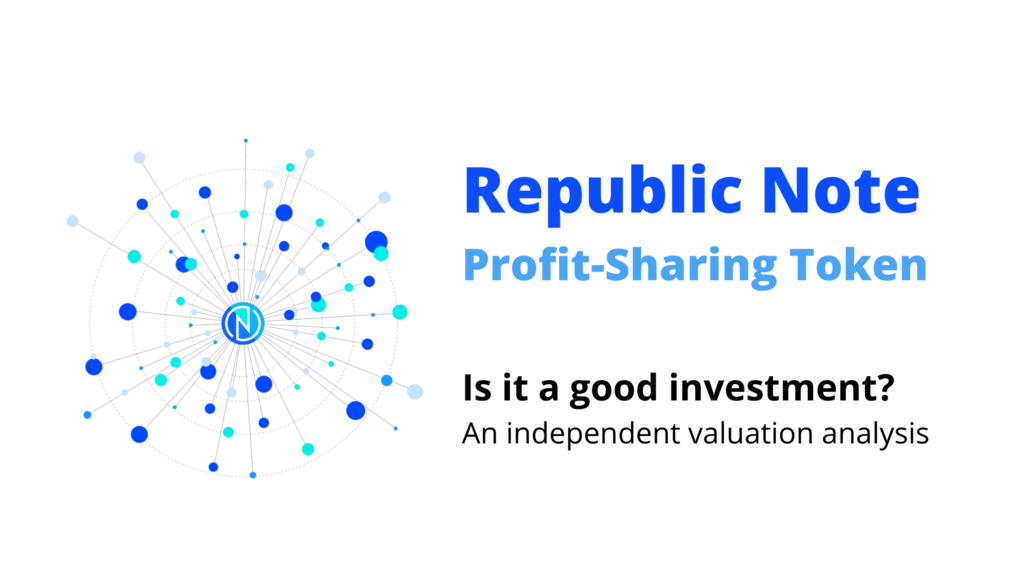Accredited Investor – Overview and History

In December 2019, the SEC proposed changes to the definition of an accredited investor that would broaden the number of people and entities that would qualify. According to the SEC’s press release, “the proposal seeks to update and improve the definition to more effectively identify institutional and individual investors that have the knowledge and expertise to participate in our private capital markets.”
The proposed updates are welcomed by many since the accredited investor definition for natural persons has remained largely unchanged since it was first introduced in 1982, based solely on net worth and income thresholds. As many people believe (and the SEC is proposing), net worth and income are not necessarily the best indicators of financial sophistication of investors. The proposal is open for comments until March 16, 2020.
Before examining the SEC’s proposed changes to the definition and what it means for equity crowdfunding investors (covered in our next post), it is important to grasp the history of the accredited investor definition and why it came to exist in the first place.
Who (or what) is an accredited investor?
An accredited investor is defined under Rule 501 of Regulation D as a natural person (i.e. not an entity) who:
- Has an income that exceeds $200,000 in each of the two most recent years, or $300,000 joint income with their spouse, and who reasonably expects to reach the same level of income in the current year, OR
- Has a net worth in excess of $1 million (individually or jointly with spouse), excluding the value of their primary residence, OR
- Is a general partner, executive officer, director or a related combination thereof for the issuer of a security being offered or sold.
Certain entities may also qualify as accredited investors, including qualifying banks, trusts, brokerage firms, employer-sponsored retirement plans, and Registered Investment Adviser (RIA) firms.
Why do we need accredited investors?
The concept of an accredited investor evolved to where it is today because of the need for issuers (i.e. those offering and selling securities) to be able to identify eligible investors without being subjected to securities registration requirements; that is, allowing those issuers to sell securities in the private markets instead of going public.
Under Regulation D, the definition was introduced as a way of helping issuers objectively determine whether investors were:
- Financially sophisticated and able to sustain the risk of loss, or
- Able to fend for themselves in the private markets,
and thus the protections of the Securities Act of 1933’s registration process were deemed unnecessary.
The accredited investor definition provides objective criteria that must be met in order to gain access to private offerings (i.e. exempt from registration with the SEC) for these early-stage and high-risk ventures.
Balancing Act – Investor Risk vs. Cost of Capital for Issuers

There is a fine balance between managing investor risk and maintaining a reasonable cost of and access to capital for issuers.
On one hand, the SEC strives to protect investors from fraud and highly-speculative ventures, especially for those investors who might not have the financial sophistication or means to know what they are investing in. On the other hand, if the SEC required every company to comply with burdensome regulatory and disclosure requirements intended to completely protect every investor, then early-stage businesses would not be able to afford the monetary or logistical costs required to raise capital.
Thus, the SEC introduced the concept of exempt offerings, or those that don’t require registration with the SEC.
What is Securities Act registration?
The Securities Act of 1933 requires registration with the SEC to ensure that companies provide the SEC and all investors with the requisite financial information about securities being offered and sold to the public.
Registration and the act of “going public” is not cheap, though. In addition to burdensome one-time costs, going public also subjects the company to on-going scrutiny, disclosures, restrictions and regulations.
Exemptions from Securities Act Registration
Congress “…recognized that in certain situations there is no practical need for registration or the public benefits from registration are too remote”. Thus, the SEC allows businesses to raise capital using different exemptions, which exempts them from the registration requirement.
Some examples of current exempt offerings include:
- Intrastate offerings
- Regulation Crowdfunding
- Regulation A
- Regulation D (e.g. private placement under 506(b), or public solicitation under 506(c))
Until the JOBS Act was signed into law in 2012, investing in private markets was mostly off-limits to non-accredited investors. Being an accredited investor was one of the only ways that investors could participate in the private capital markets.
Since 2012, Regulation A, Regulation Crowdfunding, and other changes have been implemented to make the private markets more accessible to Main Street investors.
Criticisms of the Accredited Investor Definition
For the first time since 1982, the SEC conducted a comprehensive review of the accredited investor definition and published its findings in 2015. The review was mandated as part of the Dodd-Frank Act, which requires a review of the definition every four years.
The review highlighted some of the criticisms of the accredited investor definition, many of which made it into the 2019 proposed changes.
In addition to broadening the definition to certain entities, one of the biggest proposed changes is to expand the means by which investor sophistication is determined. The primary way that an individual qualifies as an accredited investor today is simply by meeting net worth or income requirements.
Proponents of the proposed changes argue that net worth and income are poor indicators of an investor’s sophistication. What if that person inherited the money, but never invested in the private markets before? What if someone who doesn’t meet the financial thresholds works as a professional reviewing private placement offerings and making recommendations to clients?
On the other hand, opponents to the proposed changes believe that the current accredited definition is over-inclusive. Since the $200k income and $1 million net worth requirements have not been adjusted for inflation, many more individuals qualify today on a percentage basis as compared to when Regulation D was adopted in 1982. Adjusting for inflation from 1982 to 2020, those limits would be closer to an annual income of $534,000 per year and a net worth of $2.67 million.
Furthermore, some opponents don’t believe that including retirement accounts and other accounts should be included in the net worth calculation.
These reasons and more are why the SEC has proposed changes that would broaden the pool of investors who qualify.
Accredited Investor History
The need for an accredited investor term dates back to the Securities Act of 1933, although it wasn’t legally defined in its earliest form until Rule 242 was adopted in 1978.
As outlined in the SEC’s 2015 review, the definition of an accredited investor has evolved over time:
- 1933 – after the stock market crash of 1929, the Securities Act of 1933 was implemented and required registration for securities that are offered and sold to the public.
- 1934 – with the Securities Exchange Act of 1934, Congress created the Securities and Exchange Commission (SEC).
- 1974 – the Commission adopted Rule 146 to provide greater certainty in the application of the Section 4(a)(2) exemption, which exempts from registration “transactions by an issuer not involving any public offering.” Rule 146, while it didn’t explicitly define an “accredited investor”, had criteria that exists in the modern day definition (e.g. prohibited general advertising and general solicitation, offers had to be made to certain types of financially sophisticated persons, etc.)
- 1978 – introduced the accredited investor concept for the first time into federal law.
- 1980 – the Small Business Investment Incentive Act added the accredited investor definition to Section 2(a)(15) of the Securities Act and exempted non-public offers and sales of up to $5 million made solely to accredited investors.
- 1982 – Regulation D was adopted to simplify existing rules and regulations. Reg D established two exemptions and one non-exclusive safe harbor from Securities Act registration. The accredited investor definition was defined under Rule 501, which included the $200k income and $1 million net worth requirements. It also originally included investors who purchased $150k or more of securities being offered.
- 1988 – SEC rescinded the $150,000 minimum purchase requirement as a qualification of an accredited investor.
- 2011 – as part of the Dodd-Frank act, the Commission revised Rules 215 and 501 to exclude the value of one’s primary residence from the net worth calculation.
- 2019 – proposed changes to the definition based on the first comprehensive review since 1982.
How to Prove Accredited Investor Status
How does an investor prove that they are an accredited investor to issuers?
There is no formal registration process or database of accredited investors today. Depending on the offering exemption, investors may be able to self-certify their accredited investor status (e.g. Rule 506(b) of Reg D), or the SEC may require that the issuer takes reasonable steps to verify the accredited investor status of each investor (e.g. Rule 506(c) of Reg D).
Some of the most common ways that investors can be verified as accredited investors include:
- Professional Letter – obtain a letter from a registered broker-dealer, registered investment adviser, CPA, or licensed attorney.
- Income verification – provide tax or other official records proving that one’s income meets the minimum threshold for accredited investors.
- Net worth verification – disclose assets and liabilities to prove that one’s net worth meets the minimum threshold for accredited investors.
- Issuer insider – be a general partner, executive officer, director or a related combination thereof for the issuer of a security being offered or sold.
Summary
The accredited investor definition is a cornerstone of Regulation D and serves a vital purpose in today’s private markets for identifying issuers that have the financial sophistication and means to invest in the private markets.
However, it has been largely unchanged since 1982, and a lot has happened since then. Next post, we break down the SEC’s proposed updates to modernize the accredited investor definition and discuss what impact these proposed changes may have on equity crowdfunding investors.






[…] Remove the investment limit on accredited investors […]